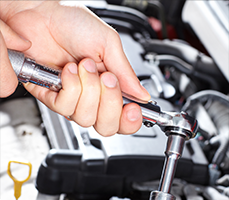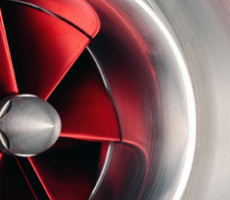Diesels and Turbos Dominate 2014 Engine List
Posted on October 11, 2014
The oil crisis of the 1970s gave OEMs a very strong incentive to reduce vehicle fuel consumption. As a result, aerodynamics took a leap forward – and so did spark ignition engine technology.
Saab and BMW launched their first turbocharged gasoline engines in that decade. Audi did too: in 1979, a five-cylinder unit in the 200 sedan, followed by a more powerful version in the more famous all-wheel drive Quattro.
It was not until 2004 that turbocharging and direct injection were combined at Audi, enabling a step-change in output and efficiency from its four-cylinder engine. In 2006, the company used scavenging for the first time, improving response at low engine speeds. The need for further CO2 reductions and to be ready for Euro 6’s tighter particulate emissions limits has led to the third-generation power unit.
The 1.8-litre unit has lower friction losses, faster warm-up and reduced full-load consumption as well as better performance – it replaces the previous generation 2-litre engine in applications such as the midsize A4 sedan.
“Now we can have very good downsizing and downspeeding strategies,” said Dr Rainer Wurms, Audi’s head of advanced development and thermodynamics of spark ignition engines. “The naturally-aspirated engine does not have a chance any longer.”
Almost every detail has been optimised to reduce friction. The main bearing diameter has been reduced, the balancer shafts run in needle roller bearings and switchable oil jet piston cooling is used for the first time.
Thermal management uses another first: the cooling system is run by an electronically-controlled module, supplied by Schaeffler, which uses two rotary valves to manage flow. The technology allows standing water in the cylinder block for rapid warm-up.
“We can ideally control engine temperature so that we always have the best temperature for the desired operating point. We reach a higher temperature on the NEDC, and this meant that we could reduce CO2 emissions by 2.5g/km,” said Wurms.
The combustion process has been improved by adding port fuel injection to complement the 200bar direct injection system. Lexus already uses this approach on its V8 but this is Audi’s first application.
The idea is that fuel metering can be ideally matched to any load point. Relying on port injection at low and part-load can reduce parasitic losses – the high pressure pump will not be consuming energy. And particulate emissions can be reduced because, in combination with the variable tumble ports, mixture formation is improved. “We always have the best charge motion and best control of the whole system,” Wurms said.




